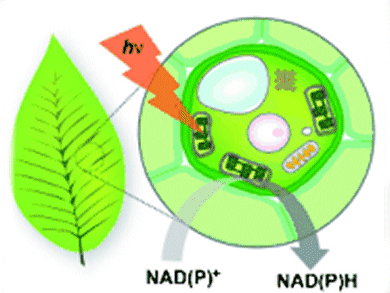Many efforts have been made towards mimiking photosynthesis and making use of the practically unlimited supply of solar energy, and its conversion to chemical energy in different forms. Chan Beum Park, Korea Advanced Institute of Science and Technology, Daejeon, and colleagues provide the first report on light-harvesting synthetic wood (LSW) for biomimetic artificial photosynthesis.
During natural photosynthesis the energy of excited electrons, obtained from photons, generates a reducing power in the form of pyridine nucleotide cofactor, NAD(P)H. This photochemically regenerated NAD(P)H is consumed by redox enzymes during the reduction of CO2 to organic compounds. In the LSW system, the same mechanism takes place, allowing the production of fine chemicals by NAD(P)H-dependent enzymes.
Similar to the natural light-harvesting by chloroplasts, waterinsoluble porphyrins encapsulated in a lignocellulosic matrix enabled the utilization of light energy (see picture). Encapsulation was achieved through simultaneous lignocellulose coagulation and porphyrin reprecipitation. This porous lignocellulosic support (SW), a composite of the structural components of plant cells: cellulose, hemicellulose, and lignin, provides a microenvironment for porphyrin encapsulation and also allows an effective photosynthesis because of the inclusion of the redox-active lignin component.
.jpg) Image: (C) Wiley-VCH
Image: (C) Wiley-VCH
This work hints at a rational design of an artificial photosynthetic system by allowing the use of renewable natural biopolymers, facile fabrication under mild conditions, and an environmentally friendly process.
- Biomimetic Artificial Photosynthesis by Light-Harvesting Synthetic Wood,
Minah Lee, Jae Hong Kim, Sang Hyun Lee, Sahng Ha Lee, Chan Beum Park,
ChemSusChem 2011.
DOI: 10.1002/cssc.201100074



